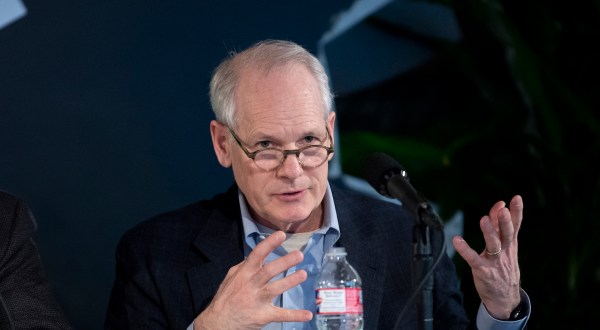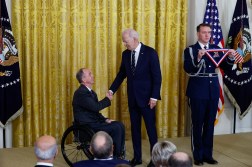 Veterans Affairs CIO Roger Baker
Veterans Affairs CIO Roger BakerThere are many federal information technology events that happen in Washington, D.C., but few are truly memorable.
One of those was the morning of Oct. 8, 2009, when Roger Baker, the chief information officer at the Department of Veterans Affairs for just a few months at that point, took to the stage at an INPUT event in Tysons Corner to a standing room crowd of more than 700 industry executives just to see him talk.
It was Baker’s first public speech since returning to government (he was previously the deputy CIO at the Department of Commerce) and the federal IT community wanted to hear about PMAS – otherwise known as the Performance Management Accountability System – that was revolutionizing the way the federal government’s largest civilian agency was handling IT.
Baker used the platform to not only tell about the cost cutting measure, but also make jokes about the PMAS acronym, changing it into a variety of humorous puns that left the audience in stitches.
It was revealed on Friday that Baker, one of the most respected CIOs in federal government, planned to resign in the coming weeks without mention of what his next plans will be.
Baker will leave behind a legacy at VA and with other federal CIOs as a manager that used a data-driven review process to get the most from its information technology. His work was a precursor to White House projects like TechStat and PortfolioStat.
“By demanding greater accountability, we’ve made dramatic improvements in the way VA develops, delivers and maintains IT systems,” said VA Secretary Eric Shinseki in 2011. “Since adopting the PMAS, we have successfully dealt with our legacy systems’ development problems, and released many new IT systems that provide critical services to our Veterans.”
PMAS halted or reformed 45 IT projects, bringing an estimated $200 million in savings to the department. It also cites PMAS and other strong management disciplines, as the main reason the department had requested no increase from its 2010 IT spending level in its 2011 and 2012 budgets.
Prior to implementing PMAS, VA estimated its success rate in delivering IT projects on schedule was under 30 percent.
Independent studies have reported IT project success rates across industry and government at approximately 32 percent on average. After PMAS, the department now rates near the 90 percent threshold.
“As our 2011 results show, the real purpose of PMAS is to ensure our IT investments result in successful delivery of functionality that serves Veterans,” Baker previously said. “President Obama’s goal is that every taxpayer dollar is well spent, and that is exactly what we are doing in VA IT development. Congress and the taxpayers can be assured VA is achieving maximum benefit for America’s Veterans from the dollars invested in new technology.”
As VA CIO, Baker had full control over his IT budget, which let him implement practices used in the private sector as he was not subject to as much budget scrutiny and demands as other CIOs.
One of his key mantras was keeping things on a tight deadline. He would not let a project have any deliverables beyond six months out. His reasoning was simple, he told FedScoop in an August 2012 interview, where he compared the approach to that of an Army sniper.
“There are a select few highly skilled yet expensive snipers that can consistently hit a target from a mile and a half away, yet there isn’t a person in uniform that couldn’t hit a target from 10 feet,” he said.
“It’s the same thought with program management,” Baker said. “A program manager that can handle every aspect of a multi-year multi-billion dollar project and keep it on track is rare, but there are lots of skilled people that can meet a six-month deadline.”
Baker will now likely return to the private sector where he’s had career success as well, most recently as the CEO of Dataline. It’s safe to say, though, he left an imprint on the federal technology world.
“Over the last four years, VA IT has come to be recognized as a leader in federal IT,” Baker said in a farewell email to VA staff. “We have improved our relationships with our IT customers; established one of the highest performing product delivery organizations in the world; achieved visibility to our networks and medical devices; focused our decision-making based on metrics and not by anecdotes; and become an IT organization that is seen as an investment for the VA rather than an expense.”
He added, “Most critically, VA IT has become the backbone for the transformation of the VA into a 21st Century organization that the Secretary has envisioned. Your ability to deliver the technology necessary to support that transformation and to reliably meet our commitments to our customers is fundamental to that transformation.”






